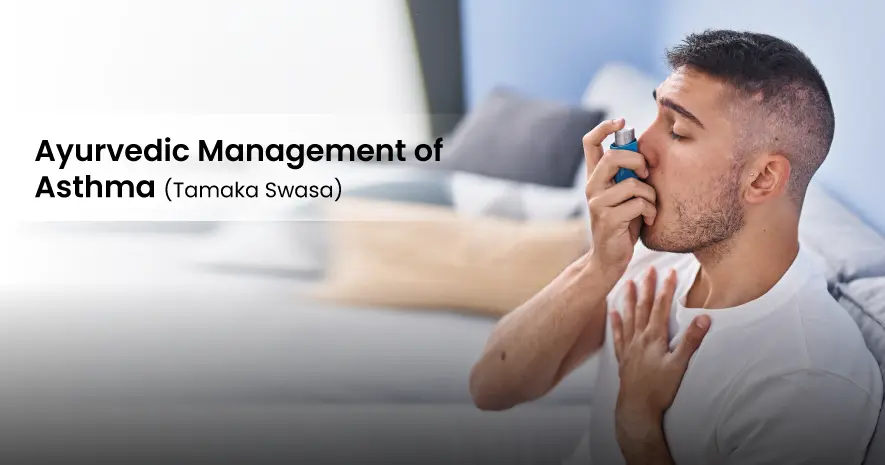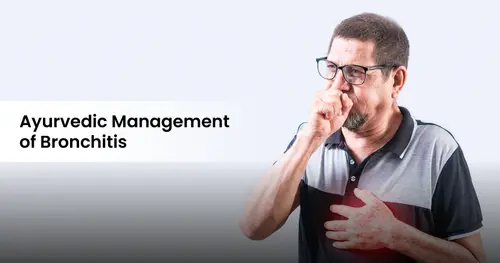
Asthma is a chronic inflammatory disorder of the respiratory tract that results in recurrent episodes of wheezing, shortness of breath, chest tightness, and coughing. These symptoms often fluctuate in severity and frequency, causing significant disruption in the lives of affected individuals. While modern medicine classifies asthma as a non-communicable yet manageable disease, inadequate control can result in frequent hospital visits, loss of productivity, sleep disturbances, and long-term morbidity.
The exact cause of asthma can be multifactorial and elusive. Genetics play a major role, particularly when there is a family history of asthma or allergic conditions such as eczema and allergic rhinitis. Environmental exposures like tobacco smoke, vehicular and industrial pollutants, pollen, dust mites, molds, and occupational irritants are also implicated. Childhood respiratory infections, premature birth, low birth weight, and early exposure to antibiotics or pollutants may compromise lung development, increasing susceptibility. Additionally, obesity is now widely recognized as a contributing factor due to its pro-inflammatory state.
Ayurvedic View of Asthma: Understanding Tamaka Swasa
In the classical Ayurvedic system, asthma is closely correlated with a condition called Tamaka Swasa, which is classified under Swasa Roga (respiratory disorders). It primarily affects the Pranavaha Srotas—the vital respiratory channels—and is characterized by breathlessness, wheezing, and a difficulty in expiration. The pathogenesis involves aggravated Vata Dosha obstructed by Kapha Dosha in the respiratory pathways, leading to bronchoconstriction and impaired airflow. This Margavarodha (obstruction of passage) reflects both the structural and functional deterioration observed in bronchial asthma.
Tamaka Swasa manifests as either Vata Pradhana (Vata-dominant) or Kapha Pradhana (Kapha-dominant) variants and is further subclassified into Pratamaka Swasa and Sannipataja Swasa, based on severity and chronicity. Classical Ayurvedic texts describe symptoms that align with clinical asthma presentations—difficulty in lying flat, a sense of suffocation, audible wheezing (Ghurghuraka), excessive thirst, dry mouth, perspiration, and a tendency to find relief while sitting upright (orthopnea).
Symptomatology
An individual suffering from Tamaka Swasa typically presents with:
- A preference for warm and soothing foods and drinks due to the aggravated Vata and Kapha doshas.
- Profuse forehead perspiration associated with mental and physical restlessness.
- Difficulty in speech due to a choked throat sensation.
- Exacerbation of symptoms during cold, damp, or cloudy weather, and after the intake of Kapha-aggravating foods.
- Temporary relief following expectoration of sputum, highlighting the obstructive nature of Kapha.
- Episodes of coughing severe enough to cause fainting in extreme cases.
- Insomnia and dyspnea while lying down, especially on the Vata-affected side.
- Audible wheezing and visible bulging of the eyeballs.
- A consistent experience of dry mouth, restlessness, and recurrent breathlessness.

Ayurvedic Therapeutic Strategy:
Ayurvedic management of asthma is methodically divided into two distinct phases: Vegakalina Chikitsa (intervention during acute exacerbation) and Avegakalina Chikitsa (treatment during remission). The former focuses on unblocking respiratory channels and arresting bronchospasm, while the latter aims at systemic restoration, prevention of recurrence, and enhancement of respiratory resilience.
Avoidance of Triggers (Nidana Parivarjana)
Preventive care begins with the elimination of identifiable aggravating factors. This includes abstaining from heavy, cold, oily, and Kapha-inducing foods such as curd, cheese, paneer, deep-fried snacks, and cold beverages. Dairy—especially at night—should be limited. External irritants such as pollen, smoke, dust, pet dander, and air-conditioned spaces must be minimized. Patients are also advised to avoid overexertion, exposure to cold winds, and suppressing natural urges like coughing or sneezing, which disrupt Vata flow.
Moderate exercise like walking or controlled breathing practices is encouraged to prevent stagnation of Kapha and maintain respiratory tone.
Palliative Treatment (Shamana Chikitsa)
For individuals who are weak or unsuitable for intense detoxification (Shodhana), internal balancing therapies (Shamana) become the treatment of choice. These involve the administration of herbs and formulations that stimulate Agni (digestive fire), clear Ama (toxins), and balance Vata-Kapha. Digestive and respiratory stimulants like Trikatu (a blend of dry ginger, black pepper, and long pepper), Vasa, and Kantakari are often used. These therapies are especially suitable for children, the elderly, and during milder episodes of the disease.
Formulations such as Dashamoola Haritaki, Sitopaladi Churna, Talisadi Churna, and Vyaghri Haritaki Avaleha support respiratory health and modulate immune responses.
Purificatory Treatment (Shodhana Chikitsa)
In robust patients with chronic, Kapha-predominant asthma, deeper detoxification is often recommended. Vamana (therapeutic emesis) is used to expel accumulated phlegm from the upper gastrointestinal and respiratory tract, ideally administered after preparatory therapies like Snehana (oleation) and Swedana (sudation). This clears Kapha obstructions and facilitates normal airflow.
Virechana (purgation) is particularly effective when Pitta is involved or when detoxification of the liver and intestines is required. The purgative agents selected should possess properties like Tikshna (sharp), Sukshma (subtle), and Ushna (hot) to effectively penetrate and expel toxins.
Special attention is given to Nadi Swedana (medicated steam therapy) to soften Kapha, followed by Snehana using medicated oils such as Ksheerabala Taila and Mahanarayan Taila.
Rasayana Therapy for Long-Term Strengthening
Following the removal of doshic accumulations, Rasayana Chikitsa plays a critical role in rebuilding vitality, preventing relapse, and strengthening the Pranavaha Srotas. This stage is vital due to the chronic and relapsing nature of asthma.
Chyavanaprasha is renowned for its respiratory and immune-boosting effects. It soothes inflamed bronchioles and enhances mucosal immunity.
Vardhamana Pippali Rasayana involves the incremental administration of long pepper (Pippali) to build resilience, especially in chronic and Vata-predominant presentations.
Formulations like Ashwagandharishta, Draksharishta, and Dashamoolarishta enhance systemic nourishment and balance doshas.
Dietary and Lifestyle Protocols
The role of Ahara (diet) and Vihara (lifestyle) in asthma management is paramount. Foods that are light, warm, and easy to digest are emphasized—green gram, barley, red rice, garlic, lemon, honey, and goat’s milk are beneficial. Cold, heavy, and mucus-producing foods should be avoided. Meals should be taken at regular intervals to maintain Agni, and excessive fasting or late-night eating should be strictly avoided.
Daily activities should include Abhyanga (oil massage), exposure to mild sunlight, and Pranayama (breath regulation practices) like Anuloma-Viloma, Sheetali, and Bhramari. These practices not only improve lung capacity but also reduce stress—an often overlooked exacerbating factor.
The Ayurvedic management of Tamaka Swasa, analogous to bronchial asthma, is grounded in a deep understanding of doshic imbalance, immune dysfunction, and respiratory pathology. By integrating Nidana Parivarjana (avoidance of causative factors), Shamana (palliative), Shodhana (purificatory), and Rasayana (rejuvenative) approaches, Ayurveda offers a comprehensive therapeutic model aimed at long-term wellness rather than mere symptom suppression.This integrative strategy fosters not only respiratory comfort but also systemic harmony and psychological well-being. In an era where asthma prevalence is on the rise due to urbanization and environmental degradation, Ayurveda stands as a time-tested, patient-centric modality offering personalized care, minimal side effects, and a focus on the root cause rather than symptomatic palliation.

September 25, 2025

September 22, 2025

September 15, 2025

September 11, 2025

August 22, 2025

August 13, 2025

August 13, 2025

August 08, 2025

August 06, 2025

July 21, 2025

July 17, 2025